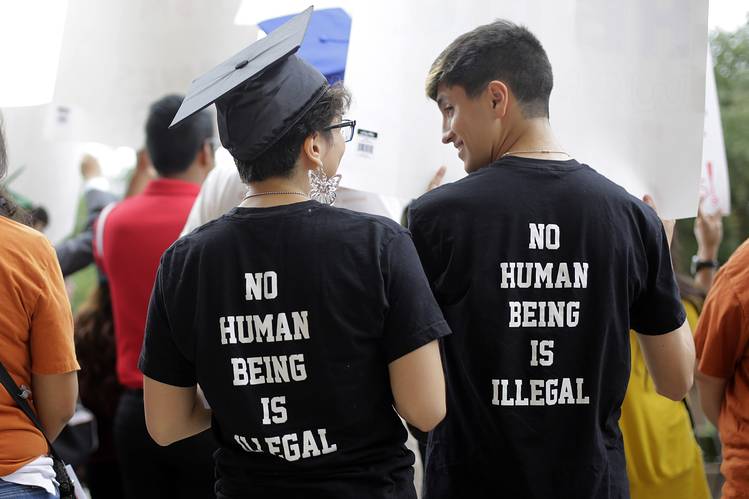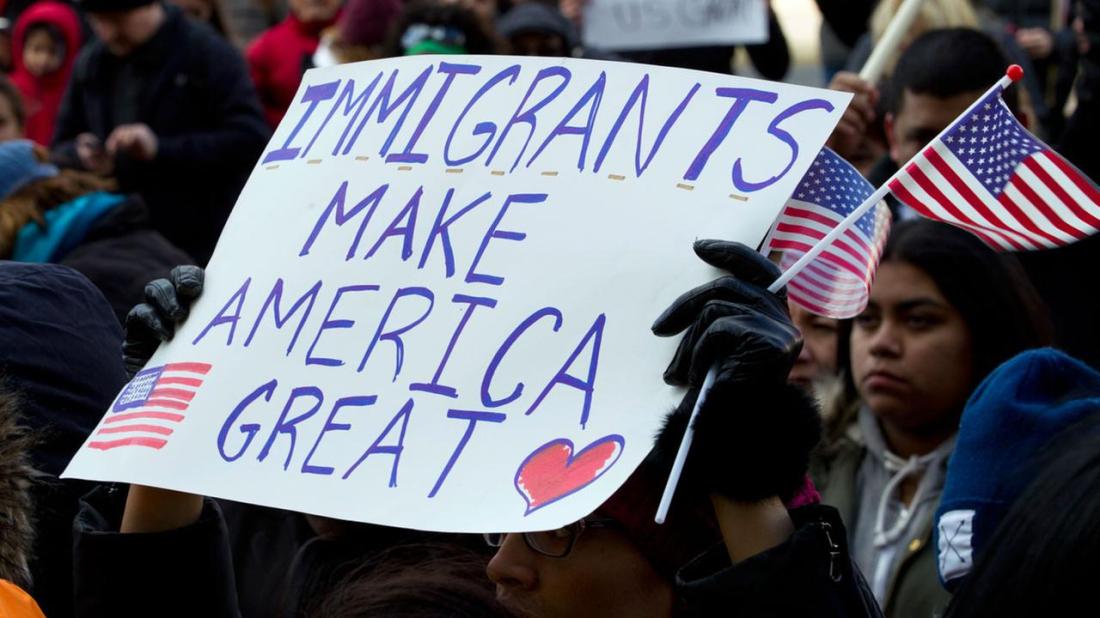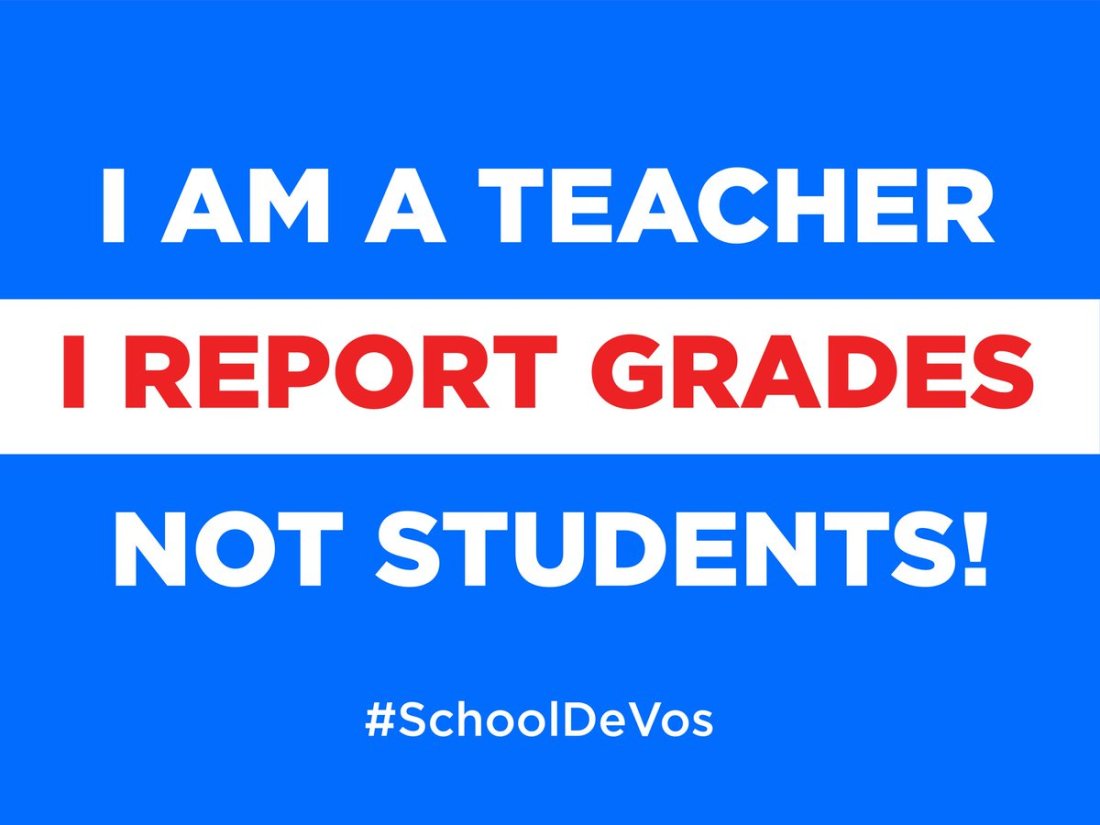Arguably the most valuable words in the U.S. Constitution are found in the Fourteenth Amendment, often referred to collectively as the “Equal Protection Clause.” No state shall “deny to any person within its jurisdiction the equal protection of the laws.” Since the Fourteenth Amendment was adopted in 1868, the Equal Protection Clause has been invoked in Supreme Court cases guaranteeing landmark civil rights such as school desegregation (Brown v. Board of Education – 1954), interracial marriage (Loving v. Virginia – 1967), and same-sex marriage (Obergefell v. Hodges – 2015).

In 1982, the Supreme Court decided in Plyler v. Doe that denying a free public education to students not legally admitted into the country violates the Equal Protection Clause. A 1975 Texas law had directed school districts to refuse enrollment to students without citizenship documentation and provided for the stripping of funds determined to have been used for educating such students. Plyler v. Doe was briefly and unsuccessfully challenged by the Gallegly amendment to the Illegal Immigration Reform and Immigrant Responsibility Act in 1996. There has been no serious challenge to the Plyler v. Doe decision in the last twenty-two years.
For decades in the U.S., including in 1982, immigration policy and immigration practice, by necessity, were understood separately. There was a time in the United States when the conversation concerning immigration reform surrounded how better to match policy with the on-the-ground human interaction at the border. Reagan Republicans in the 80’s, though still favoring draconian immigration policies, leaned toward compassionate rhetoric and tended to look away from the often sympathetic practices of border patrol. The 1996 reform created more robust immigration enforcement, followed shortly by a full scale deployment of those reforms after the attacks on September 11, 2001. And then, more recently, Obama created for himself a mixed legacy on immigration by authorizing the Deferred Action for Childhood Arrivals (DACA) program while also being rightfully derided as “Deporter-In-Chief.”

Today, perhaps more than ever since 1982, the ruling in Plyler v. Doe represents a direct contradiction to both U.S. immigration policy and practice. Trump’s immigration policy, practice, and rhetoric are all equally draconian, inhumane, and unconstitutional. Students without documentation being freely educated in our neighborhood schools flies directly in the face of everything that Trump says he stands for. Given this fact, it really should come as no surprise that so many on the right want to abolish public education. Plyler v. Doe is the impetus for one of the truly most progressive practices of any of our nation’s public services.
Public schools are by default a central part of what is called the “Sanctuary Movement.” Neighborhood schools were providing sanctuary before anyone was using the word. The Supreme Court of the United States has given public school officials (teachers, administrators, and staff) carte blanche permission to disregard U.S. immigration policy and agents; the Department of Homeland Security and ICE (Immigration and Customs Enforcement). The NILC (National Immigration Law Center) has issued an invaluable tool for “The Legal Authority for ‘Sanctuary’ School Policies.”
Public schools were providing sanctuary before anyone was using the word.
Constitutionally protected sanctuary school practices are even more progressive than much needed, but not yet realized, provisions like Medicare for all and tuition free college. And so far there has not been a movement of teachers willing to take Education Secretary Betsy DeVos’ suggestion to report to ICE any student without documentation. To say that immigration status is not considered in public school policy is not to say that teachers are unconcerned with things like work visas, quality of life, or pathways to citizenship for immigrant student families. Public schools do not operate with “no regard” for immigration status. It simply is not an indicating factor in eligibility, and never will be.

Of course, like most U.S. Americans, most public school educators do not support “open border” immigration, but their school’s policies and practices do. If through some overnight populist miracle, Trump reversed all of his immigration initiatives and rhetoric, welcomed the recent caravan of asylum seekers, and essentially opened the southern border; U.S. neighborhood schools would be ready or at least close to ready. A strong infrastructure for English Language Learners already exists. Many schools already have a culture of bilingual classroom practices. And community schools is the model that is needed to provide the kind of “wrap around” services under which these new communities would thrive. Of course, additional funding would be essential to educating so many new arrivals, but immigrants historically benefit the economy in a way that is commensurate to this needed funding.
Just because people want to vette those coming across our borders, doesn’t mean that all of us are saying, children here illegally don’t deserve an education. The issue is, when is enough, enough? The cost of allowing a free flow of people across our borders, cannot be sustained. You failed to quote the latest number, that the cost is some $150,000,000,000 per year, to support illegals through education, medical, housing, food and criminal justice. The U.S. instituted an immigration policy in the early years of our country. Ellis Island was a focal point, to vett immigrants and most importantly to keep disease from spreading into the the U.S. The immigration policy also had another agenda, which is completely overlooked today. Workers…. In the early years of industrialization, factories needed workers. Business had grown faster than our population. Immigration policy was developed to allow a certain number in to satisfy this need and they had the hopes they could keep from overpopulating the worker pool, which would drive down wages and add to the poorer populations. A lot of thought went into immigration policy in the early years of our country. We have the situation today where immigrant or migrant workers have taken over the construction industry, a key economic power, driving jobs, tax collections and wealth. 1,000’s of U.S. contractors are out of business, because they cannot compete with the cheap labor. Millions of U.S. citizens, once holding construction jobs, no longer do. This also occurs in many other sectors of our economy. I could go on. I’ll close with this question. Do you really think the borders should allow anyone to cross?
LikeLike